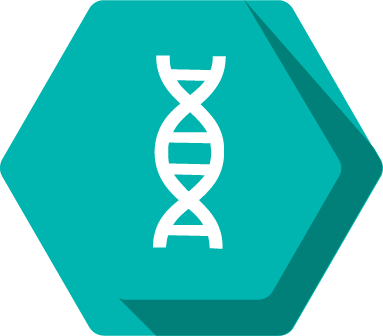Noora Aabed

Pronouns: She/Her/Hers
UROP Fellowship: CCSFP, Henry Ford College
Research Mentor(s): Kelsey Temprine, PhD and Yatrik Shah, PhD
Research Mentor Institution/Department: Michigan Medicine, Department of Molecular and Integrative Physiology
Presentation Date: Wednesday, August 4th
Session: Session 2 (4pm-4:50pm EDT)
Breakout Room: Room 3
Presenter: 4
Abstract
Via the article Colorectal cancer statistics, 2020, approximately 147,950 individuals were diagnosed with Colorectal Carcinoma (CRC) and 53,200 died from the disease in 2020. CRC, like many other cancers, activates signaling pathways to become more aggressive and deadly. STAT3 (signal transducer and activator of transcription) is a signaling pathway that promotes cell growth during normal development and cancer. The Shah lab has previously discovered that the STAT3 pathway plays a major role in promoting CRC growth. Interestingly, some CRC cell lines, like SW480 and HCT116, have high levels of p-STAT3 (a marker of STAT3 pathway activation) at baseline (without ligand stimulation). The Shah lab also found that glucose deprivation, but not the removal of amino acids or serum, decreased the activation of the STAT3 pathway in HCT116 and SW480 cells. We wanted to further explore the STAT3 signaling pathway in CRC cells and the interactions between signaling and metabolites in the CRC environment.
First, we wanted to further define the timeline over which glucose deprivation leads to decreased p-STAT3. Although previous work in the lab had shown that glucose deprivation leads to loss of p-STAT3 in SW480/HCT116 after 24 hours, we were still unsure of when exactly the loss occurs during that time period. We performed Western blots to look at p-STAT3 levels in cells deprived of glucose at various timepoints (ex: 1h, 2h, 4h, 8h, and 24h). Our initial findings have shown that STAT-3 signaling drops between 8-24 hours of glucose deprivation, and in future experiments, we will narrow it down further.
Second, although most CRC cell lines (such as HCT116 and SW480) have high levels of p-STAT3 at baseline, others, including RKO, do not. We next wanted to determine why this is the case. One hypothesis was that HCT116 and SW480 cells might be secreting a factor that promotes STAT3 signaling in the presence of glucose, so we decided to test that by treating RKO cells with conditioned media (CM) generated from HCT116 and SW480 cells. Interestingly, RKO cells treated with this CM had much higher levels of p-STAT3 compared to RKO cells treated with DMEM, supporting our hypothesis. We further hypothesized that RKO cells do not secrete this factor. To test this hypothesis, we are treating HEK293T cells (which also have low basal p-STAT3 levels) with CM from HCT116, SW480, and RKO cells. If our hypothesis is correct, we predict that there will be an increase in p-STAT3 levels in HEK293T cells treated with HCT116 or SW480 CM but not with RKO CM. We are currently generating those samples and using Western blotting to look at p-STAT3 levels.
Our next steps are 1) further defining the connection between the secreted protein(s) and glucose and 2) identifying the secreted protein(s). In the future, we hope to find a way to eliminate the responsible factor as a treatment to prevent CRC growth. Overall, we believe that a better understanding of the role of glucose in STAT3 signaling could lead to more effective therapies for CRC.
Authors: Noora Aabed; Kelsey Temprine, PhD; Xiang Xue, PhD; Yatrik Shah, PhD
Research Method: Laboratory Research with Animals








